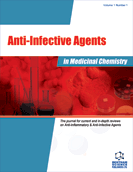Abstract
In addition to sulfur-containing compounds that form essential and indispensable constituents of all living cells, there is a plethora of less wide-spread sulfur-containing compounds with much less common and often unexpected properties, chemical structures and biological activities. Some of these compounds have long been known as efficient antibiotics. This review surveys these less known compounds with two and more sulfur atoms in their molecule. In particular, it deals with natural heterocyclic compounds isolated, e.g., from bacteria, fungi, lichens, plants, and animals but also from unusual and exotic sources such as sea invertebrates (coelenterates, sponges, tunicates, sea worms), etc. Compounds such as calicheamicins, thiazole-related compounds and epipolythiodioxopiperazines may serve as examples. Because of their vast variety, individual compounds are grouped according to their chemical structure (only compounds whose chemical structure has been identified are included). These compounds affect a huge array of organisms from microorganisms to man, and the pharmacological activities they exert range from antiviral, antibacterial, antifungal, insecticidal or antiprotozoan effects to regulation of gene expression, cytoskeleton disruption, immunomodulation, plant growth stimulation or inhibition, pro- or antioxidant action, effects on selected enzymes, receptors and signal transduction pathways, etc. The activities are however often known only sketchily, and this paucity of data, and the fact that the activities were tested on a diverse spectrum of test organisms, cell lines, etc., is of necessity reflected in our survey. Two seemingly trivial but important points deserve attention: (a) compounds with widely different structures and from widely different sources have often very similar pharmacological effects; (b) a slight modification in the molecule may bring vast changes in the biological effects of the compound, in terms of quality, quantity and targeting. The purpose of the review was to show both the unique and common features of these compounds and to point out their potential usefulness for mankind.
Keywords: Bithiazoles, Thiopeptides, Thiazole related compounds, Thiophenes, Thiolanes, Epipolythiodioxopiperazines, Six and more membered oligosulfides, Disulfides, Enediynes
 6
6





















